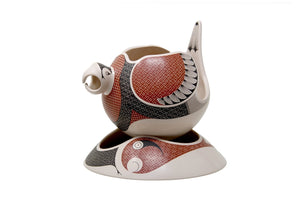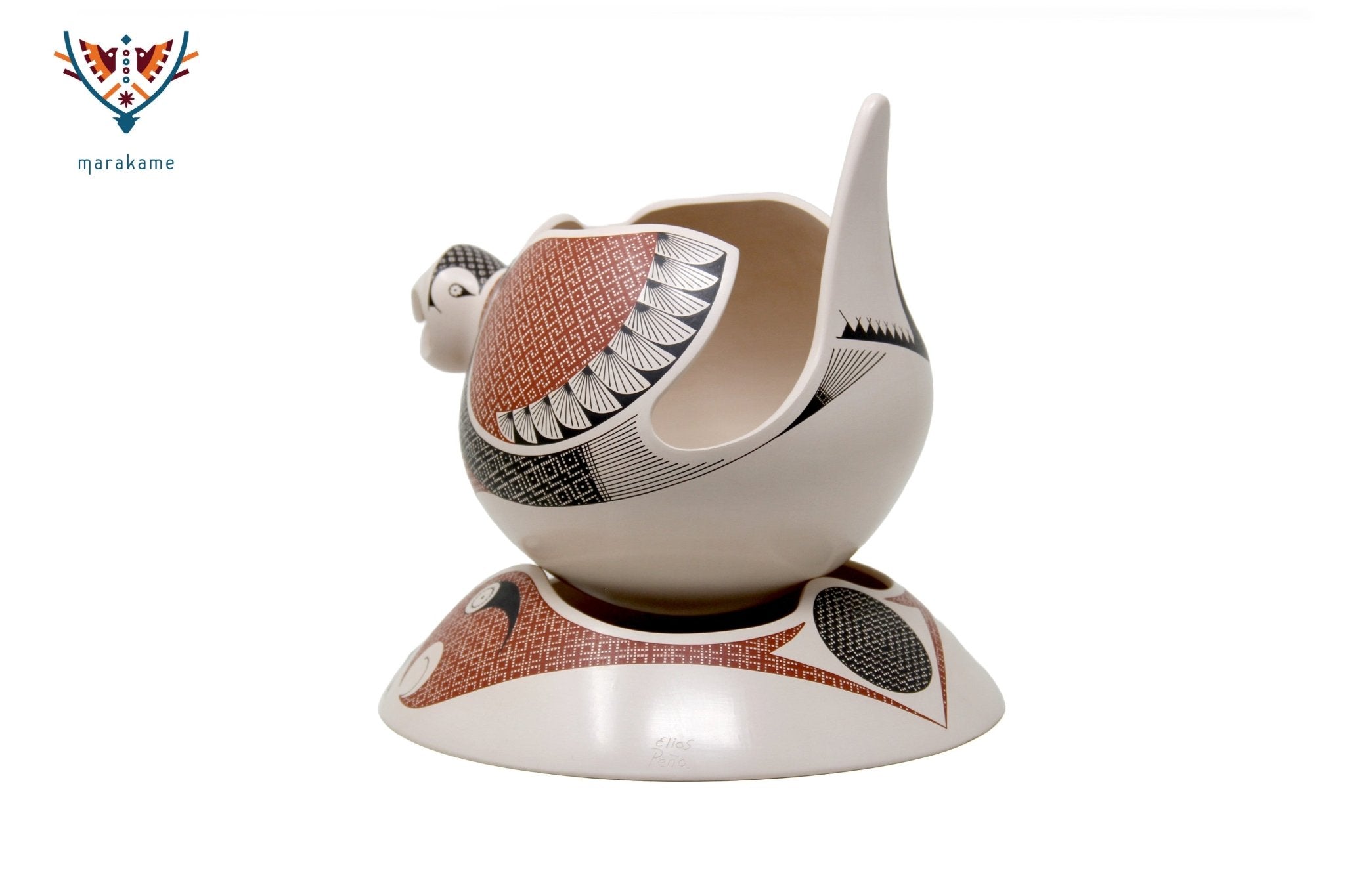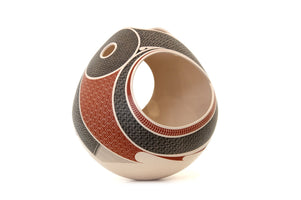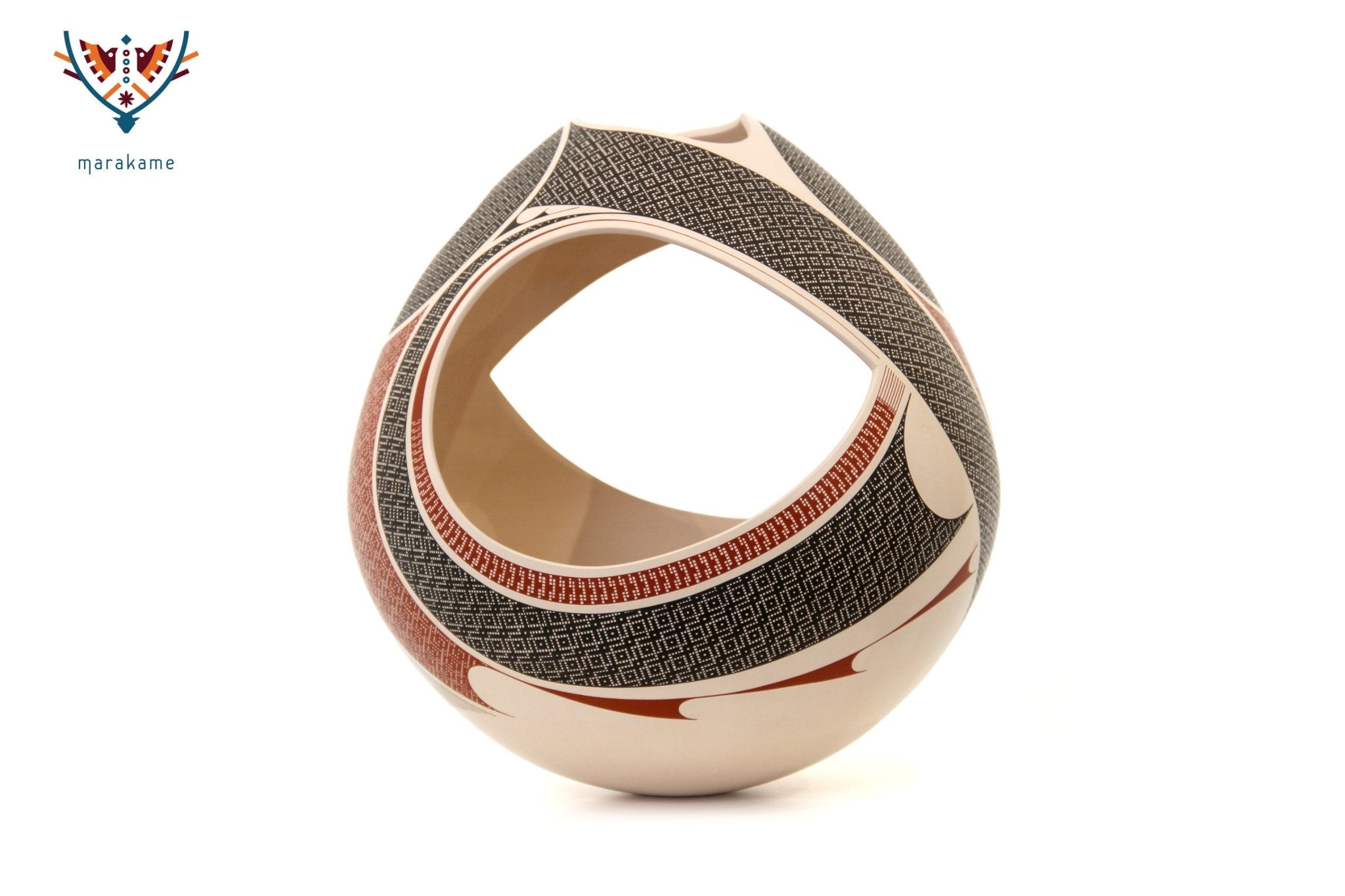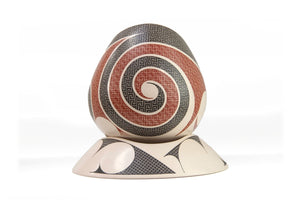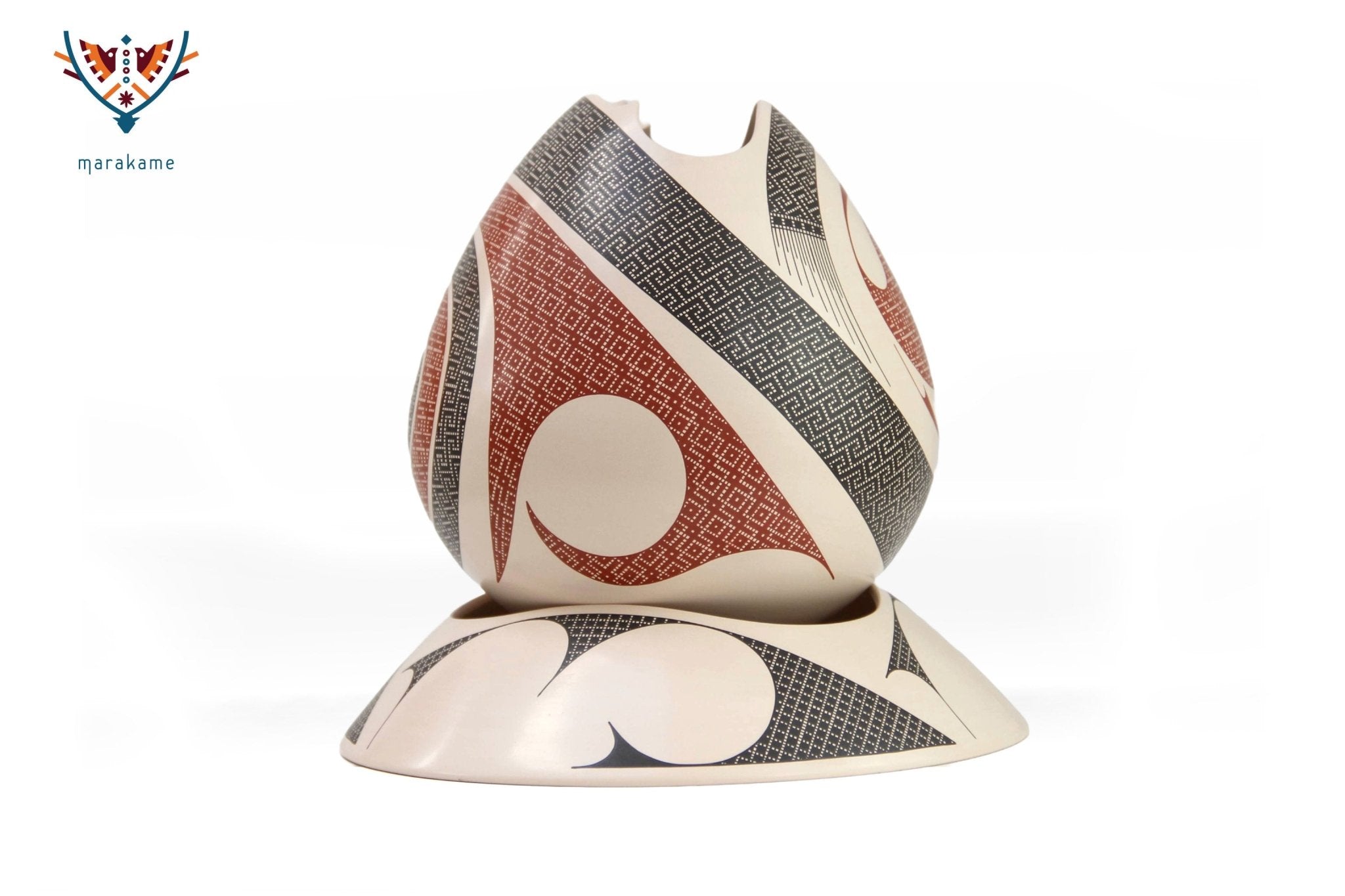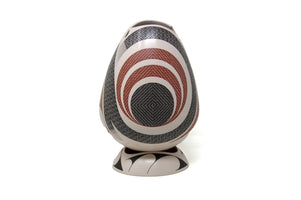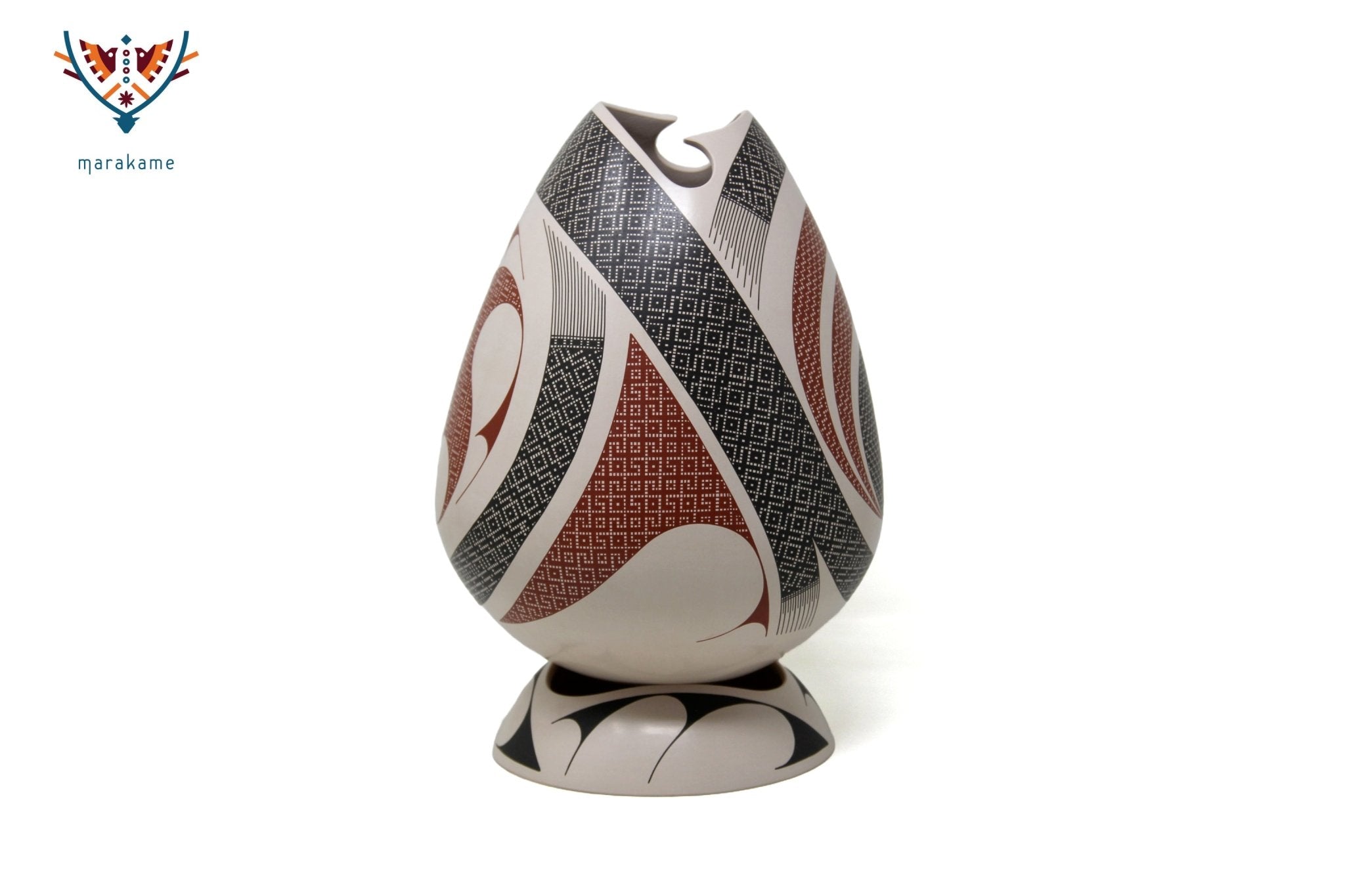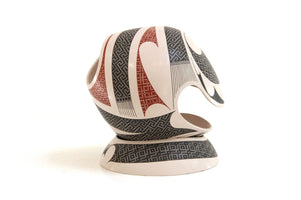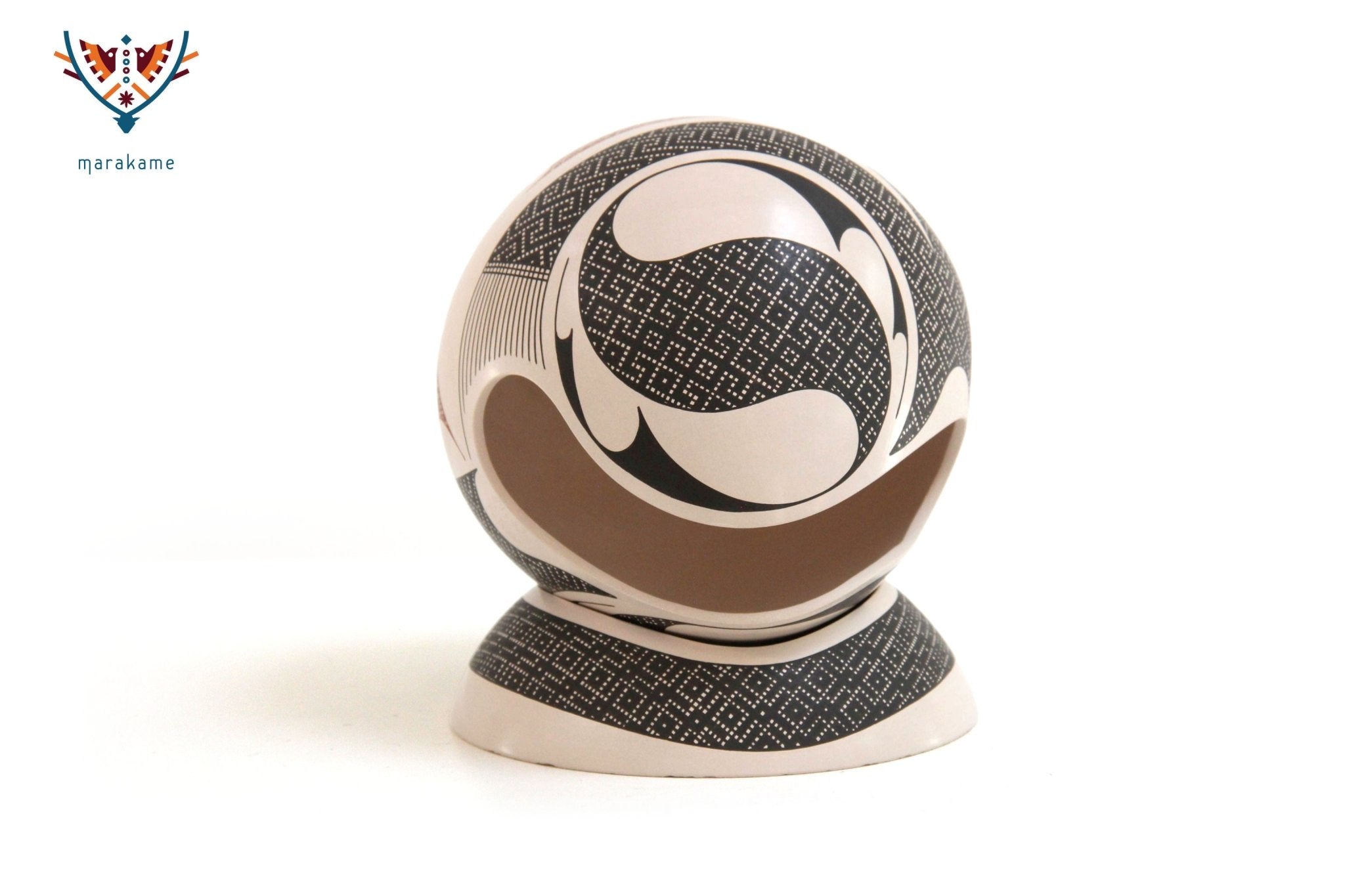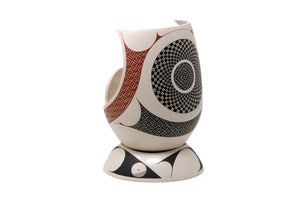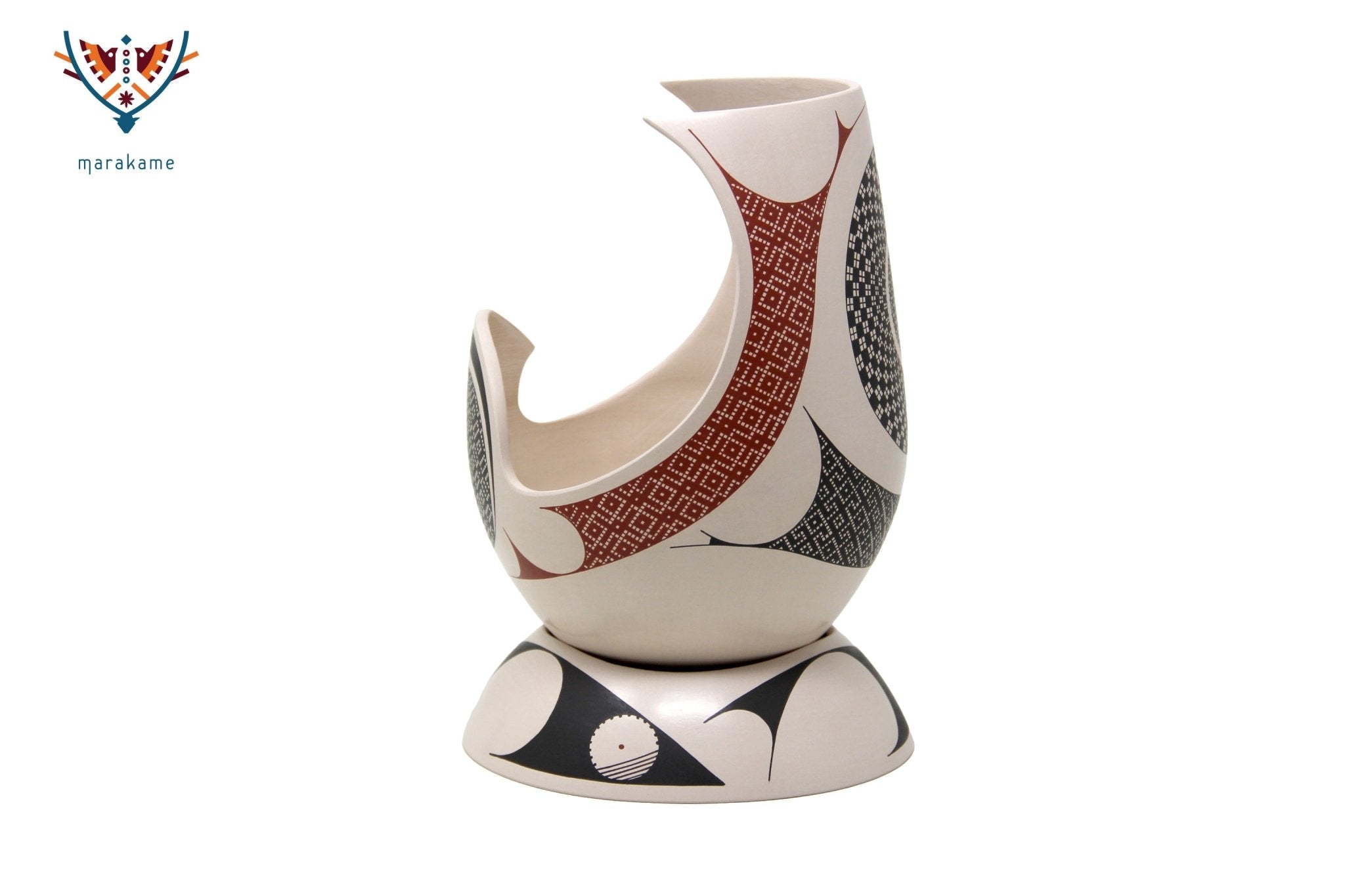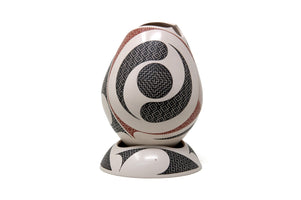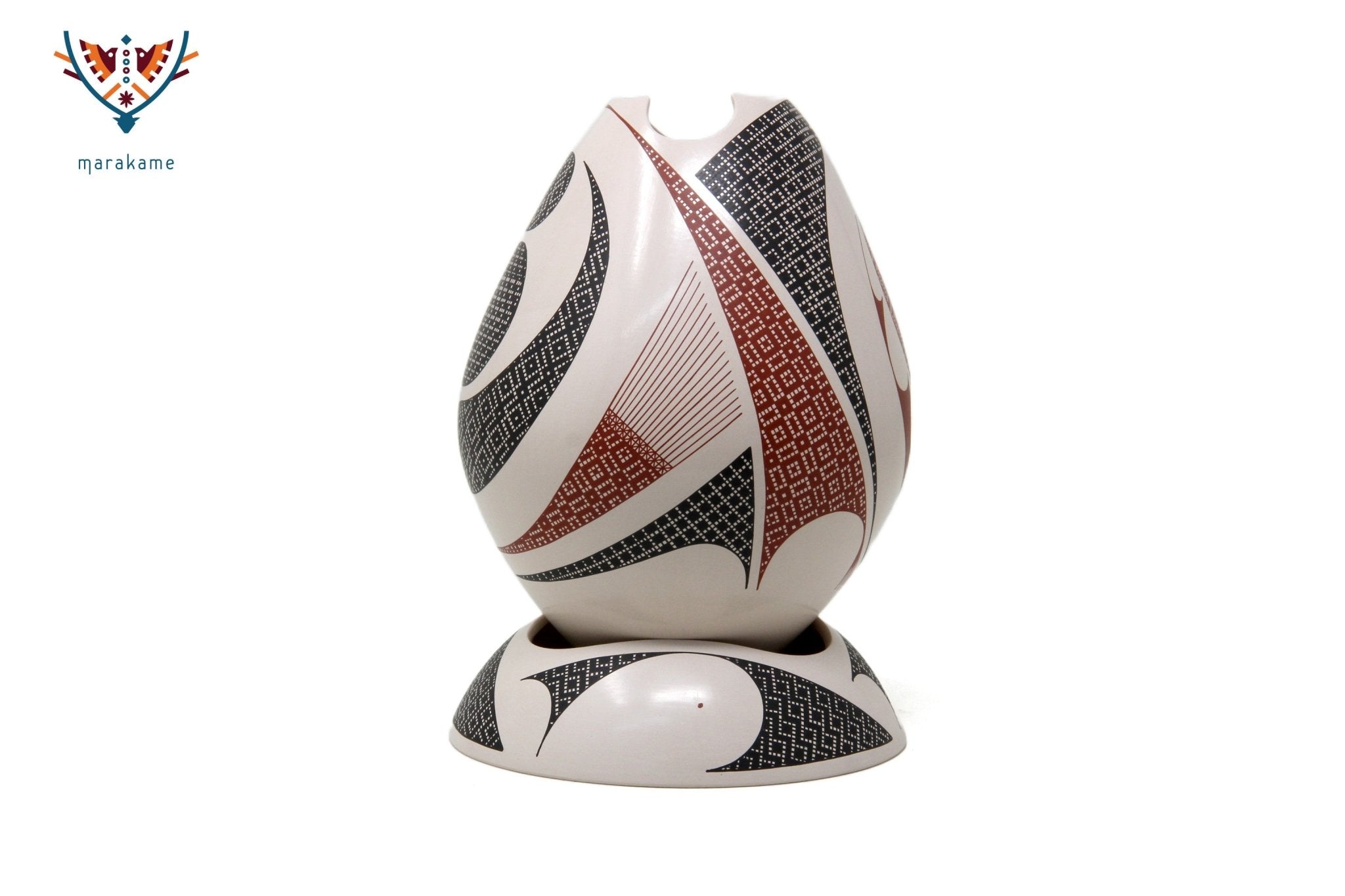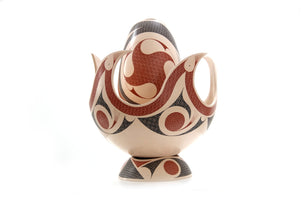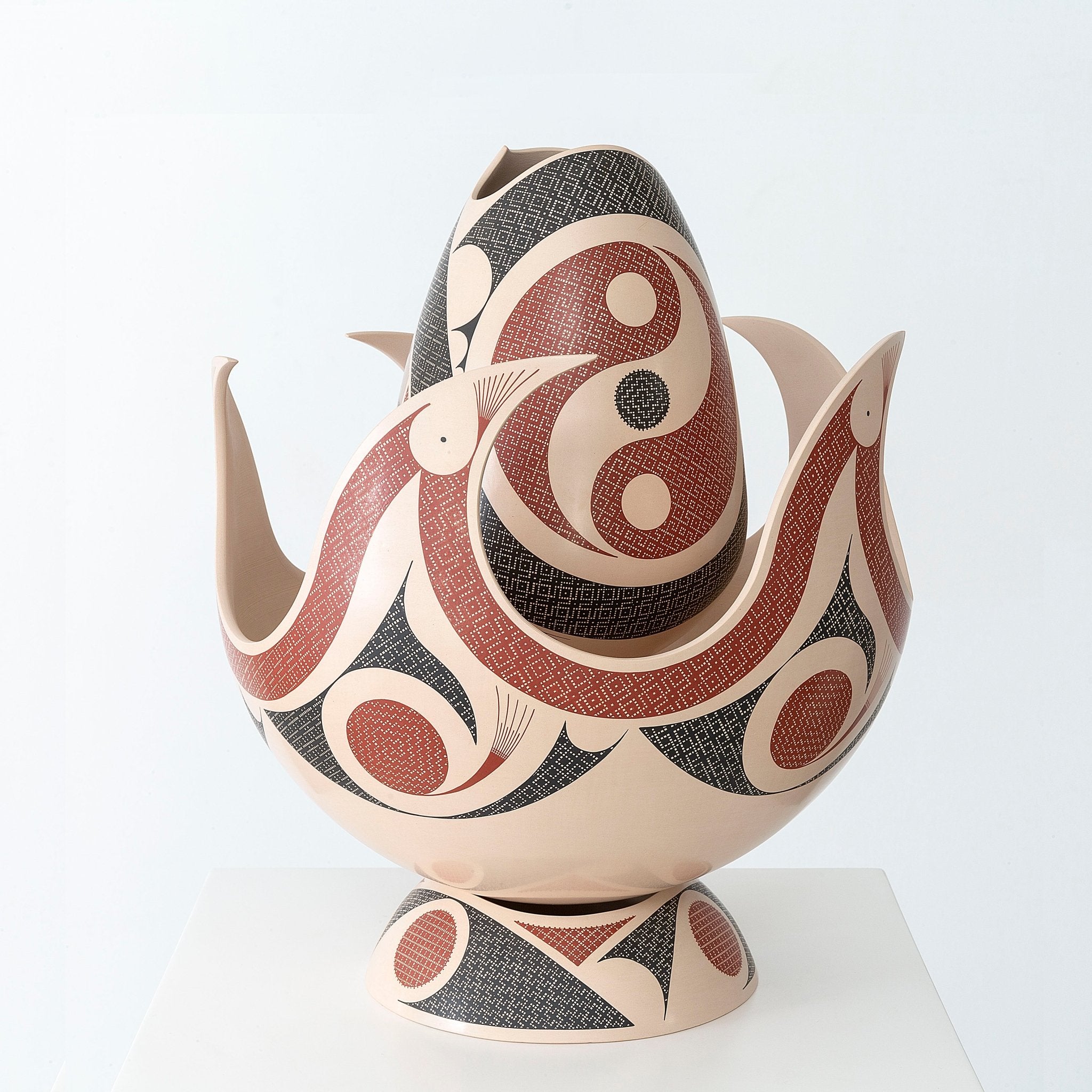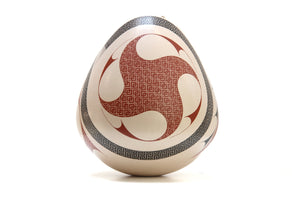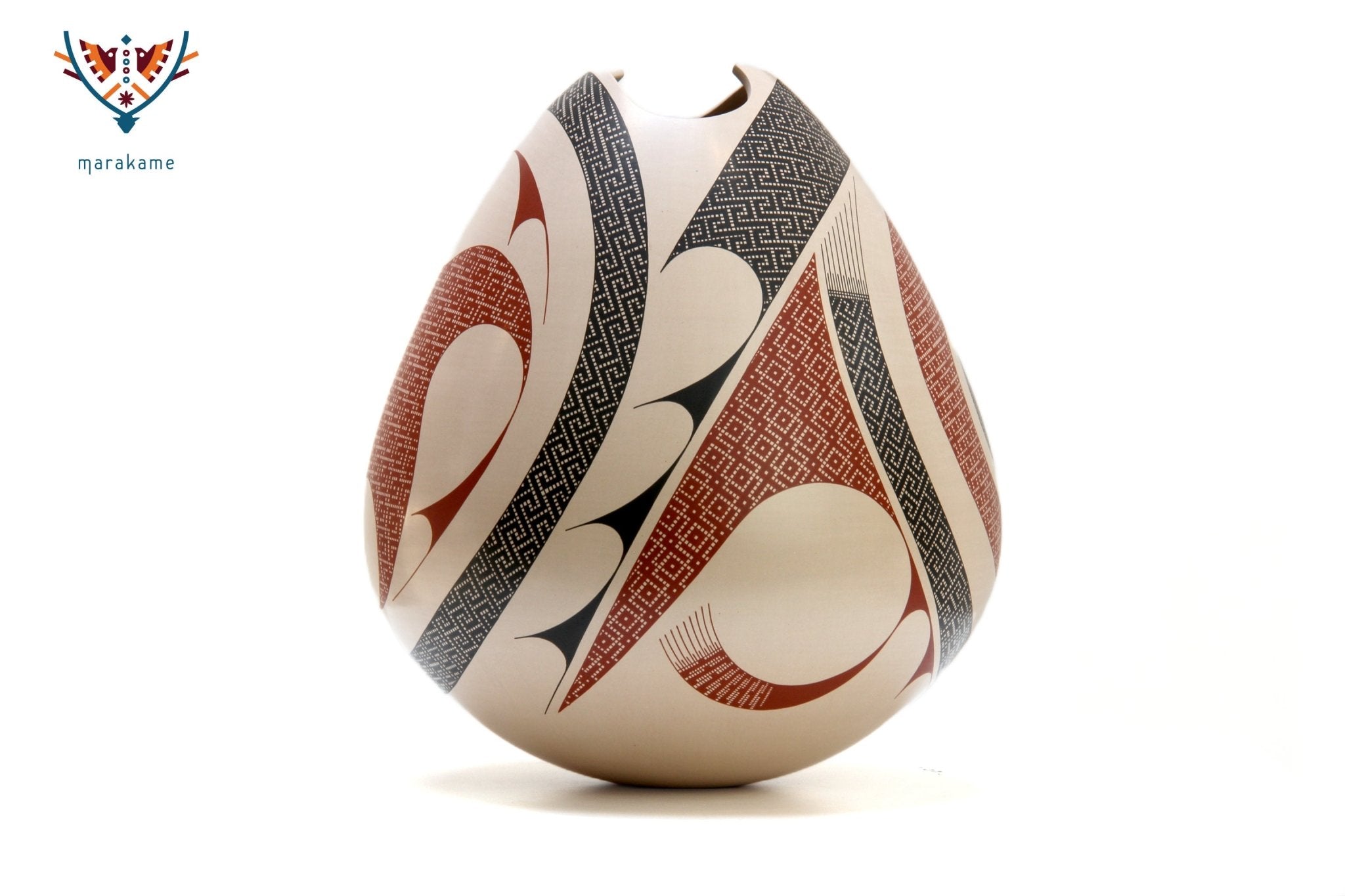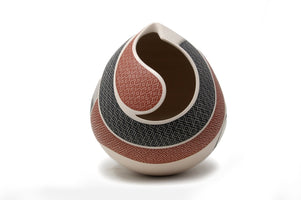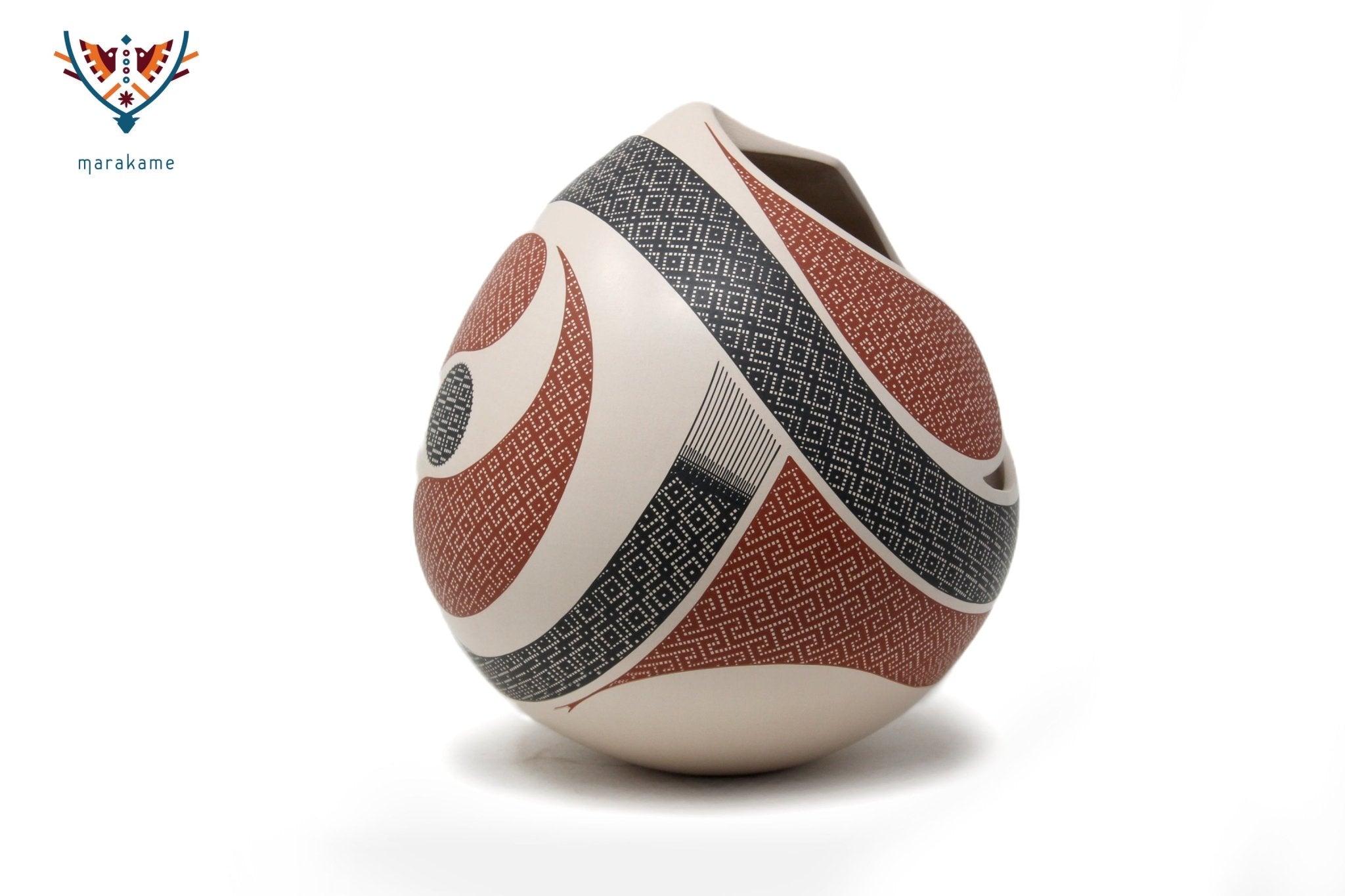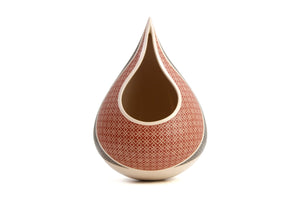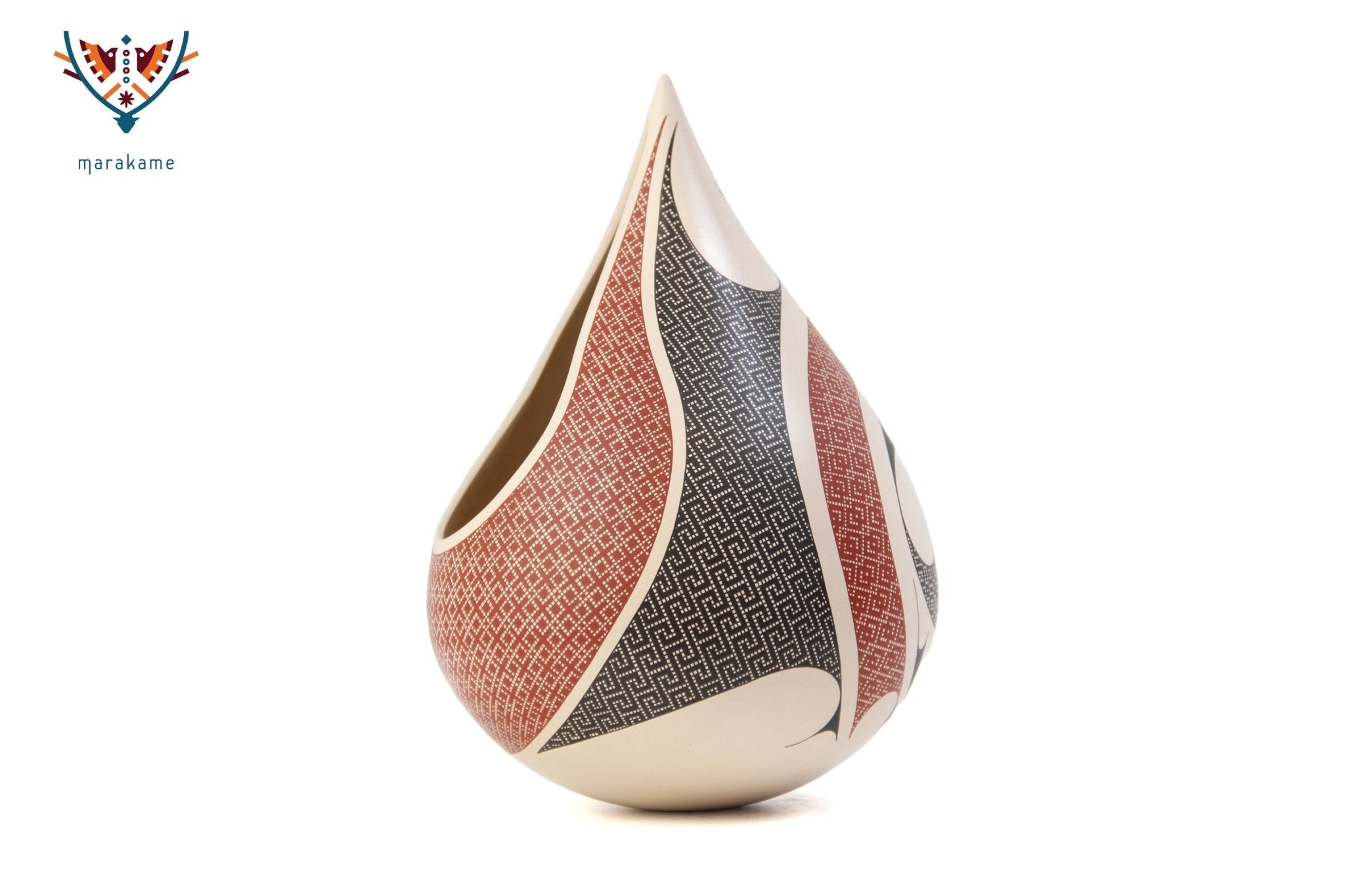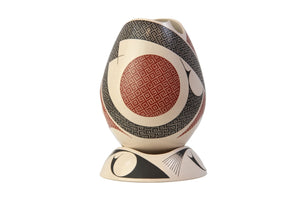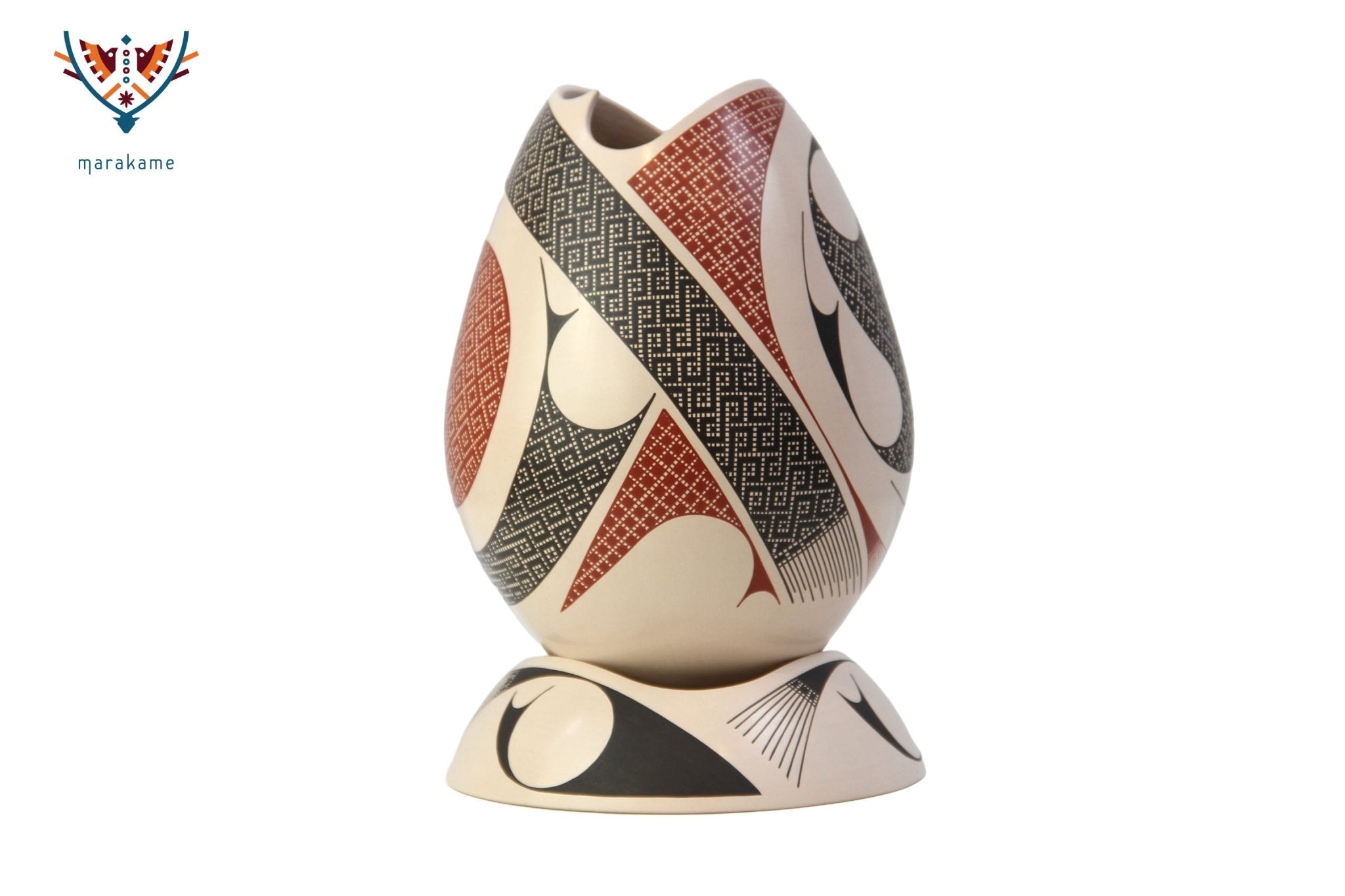Elias Pena

He was impressed when, at a very young age, Mrs. Socorro Sandoval showed him ceramic work for the first time in her workshop. He had gone with his family to Mata Ortiz to sell products they grew at home, and as he watched them burn pots, she invited him to come in and show off his skill and speed, lifting a large, closed pot from a single block ( unlike many others, who assemble their pieces by blocks, by parts).
Read more
At that time the invitation to learn the pottery trade – to incorporate it into their domestic economy – was for the whole family, but he specialized in a figurative branch without equal, with respect to the forms, their assemblies, the metaphorical narrative of the pieces such as sculpture and polychrome surfaces like painting. He is a mature artist who knows and masters all manufacturing processes, achieving a virtuous and perfect quality.
A couple of drops of water are presented in this exhibition, showing two states of this medium fundamental for life and for pottery. One suggests movement, the drop falling, elongated and pointed, vertical. A delicate slit opens the interior space of the pot, ready to be filled with the vitality of any world. The second shows a drop at rest, more round and geometric, still. Both are surprising for their balance, the relationship they have with gravity, the range of colors, the thinness of their walls, the lightness in substance. This conceptual and symbolic relationship is one of the characteristic features of Elías' work.
He restricts his chromatic range to the color of clay, red and black, for a specific interest: to continue dialogue with the ancient ceramics of Casas Grandes, a place to which he owes his training, his family and his work. Each block has its design, a gala of fretwork and patterns that are molded to the shape and that are the result of the masterful handling of the line, not so much of the stippling.
An assembly made up of an oval pot and a two-part flaming base symbolizes the moment of fire in the ceramic process. In this and other pieces of profound meaning, Elías Peña displays the creative power that results from the dialogue between cultural heritage and contemporary design.


